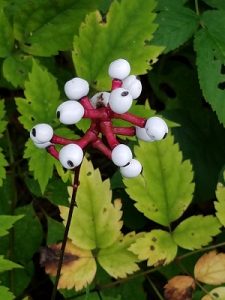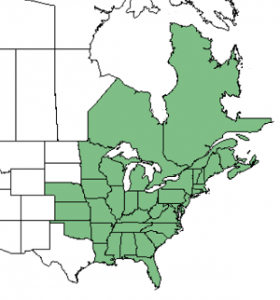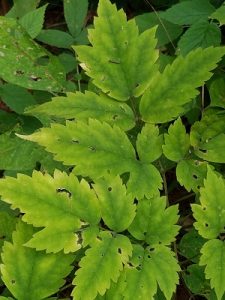White Baneberry Facts and Information
General Information
White baneberry (Actaea pachypoda), also known as dolls eyes white cohosh, white-beads, white beads and toadroot is a native wildflower to the western hemisphere. It is a perennial member of the buttercup family growing in eastern North America. The plant flowers from May to June with white berries following that ripen over the summer. The berries will stay on the plant until frost. Many people use white baneberry in landscaping taking the plant from woodlands. In many cases this is illegal and in several states such as New York and Florida, the actions have led to the plant being listed as exploitably vulnerable and endangered respectively. Taking seeds and planting them in domestic landscape may take two years to germinate and adversely affect the natural environment. If you find white baneberry interesting and wish to include it in your landscaping, please contact a stocking nursery – if they do not have in stock, they can special order.
Description
White baneberry grows to about 18 inches to 2 feet tall and can spread from 2 feet to 3 feet wide. Its le aves are toothed at the edges and are also compound. They are roughly 16 inches long and 12 inches wide. The leaves grow alternately on the stem – this means one leaf comes out at a time on the stem.
aves are toothed at the edges and are also compound. They are roughly 16 inches long and 12 inches wide. The leaves grow alternately on the stem – this means one leaf comes out at a time on the stem.
The flowers are small – maybe ¼ to ½ inch and are colored white and grow on the end of a stalk. As referenced earlier, the flowers bloom from May to June. The picture of the white baneberry flower comes from USDA plant database.
What is so interesting about this plant are the berries and the way they sit on the plant. They look almost alien. One of its nicknames, dolls eyes is spot on. The berries are not really that big, ½ inch or so in diameter, all white with a black stigma scar.
Habitat
White baneberry thrive in moist, fertile soil with lots of organic  matter in partial to full shade. White baneberry is an upland plant and almost never occurs in wetlands. The picture of the plant with berries was taken in the Southern Adirondacks in a deciduous forest border facing south above a small lake.
matter in partial to full shade. White baneberry is an upland plant and almost never occurs in wetlands. The picture of the plant with berries was taken in the Southern Adirondacks in a deciduous forest border facing south above a small lake.
Range A range map indicates, white baneberry grows North into Ontario Canada and east to Nova Scotia. It grows as far south as Florida and west out to Louisiana and Oklahoma.
Edible
Although I have read that certain birds do eat the berries, the entire plant, just like Climbing Nightshade, is poisonous including the leaves, stalk, and especially the berries. If eaten, symptoms include nausea, vomiting, cramps, mouth blisters, confusion, and headache. The plant’s poison also has cardiogenic properties and can cause cardiac arrest (heart attack) in in children and immune compromised adults. This is a plant best admired for its beauty and left alone.
eat the berries, the entire plant, just like Climbing Nightshade, is poisonous including the leaves, stalk, and especially the berries. If eaten, symptoms include nausea, vomiting, cramps, mouth blisters, confusion, and headache. The plant’s poison also has cardiogenic properties and can cause cardiac arrest (heart attack) in in children and immune compromised adults. This is a plant best admired for its beauty and left alone.